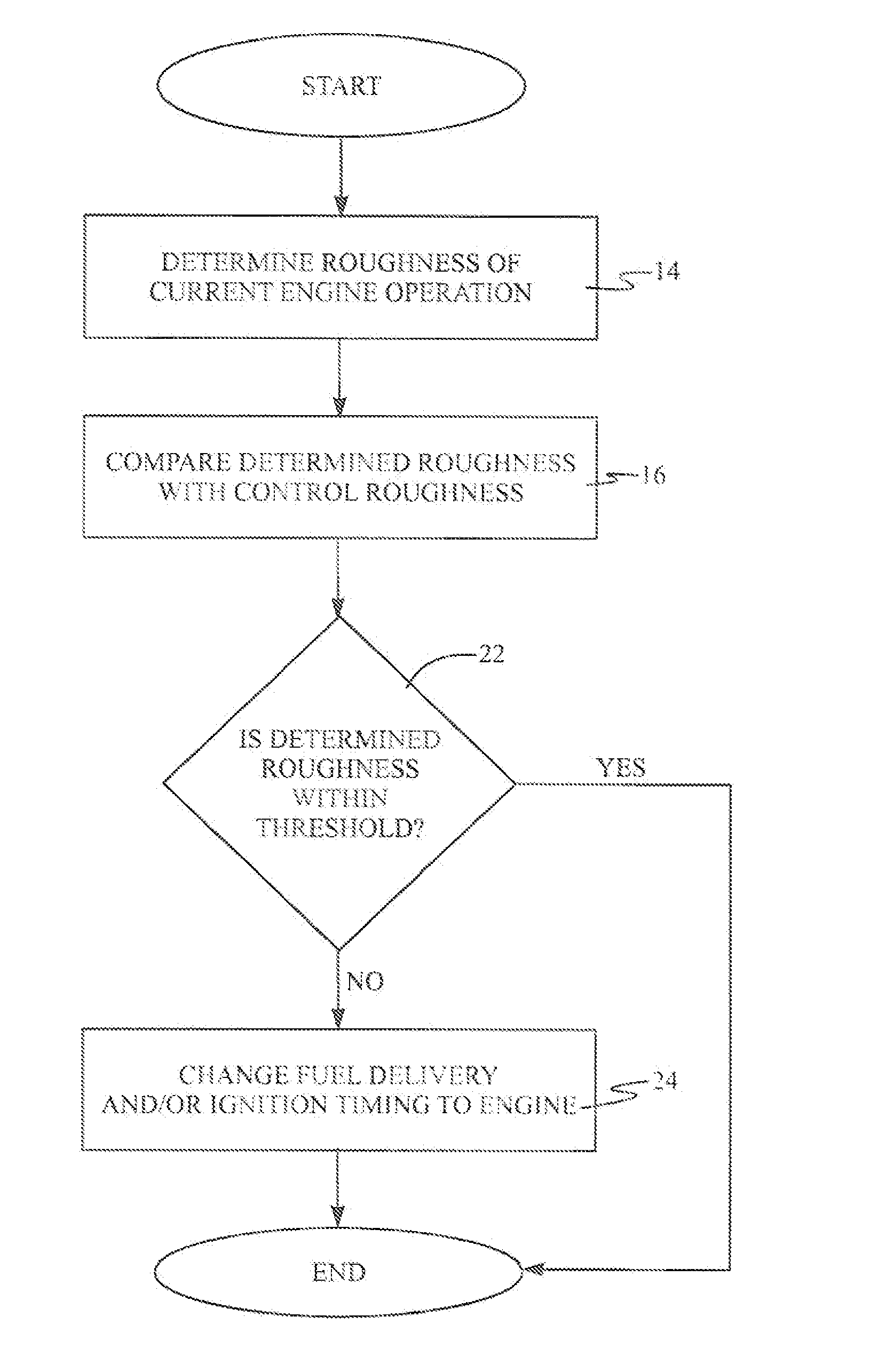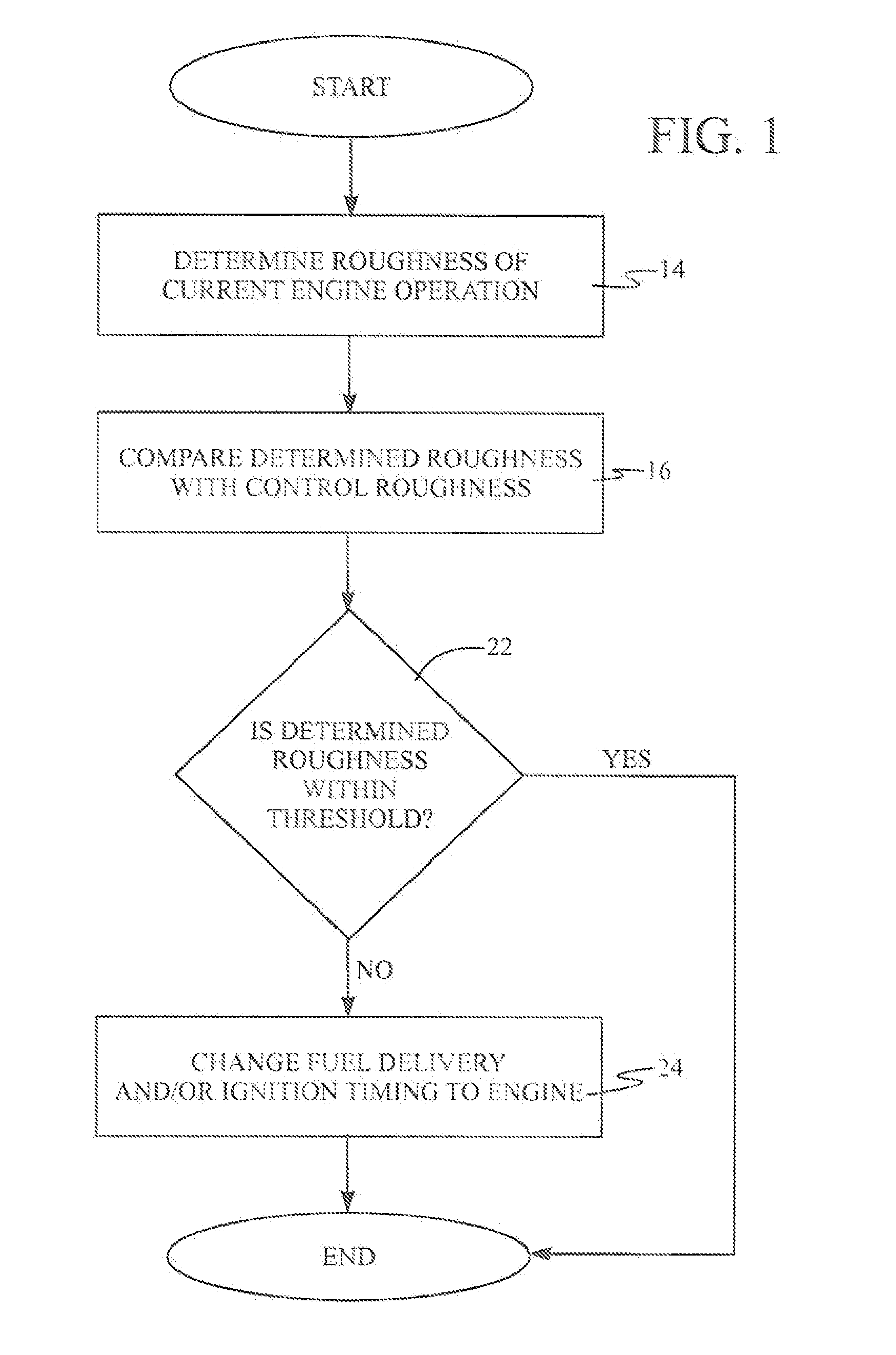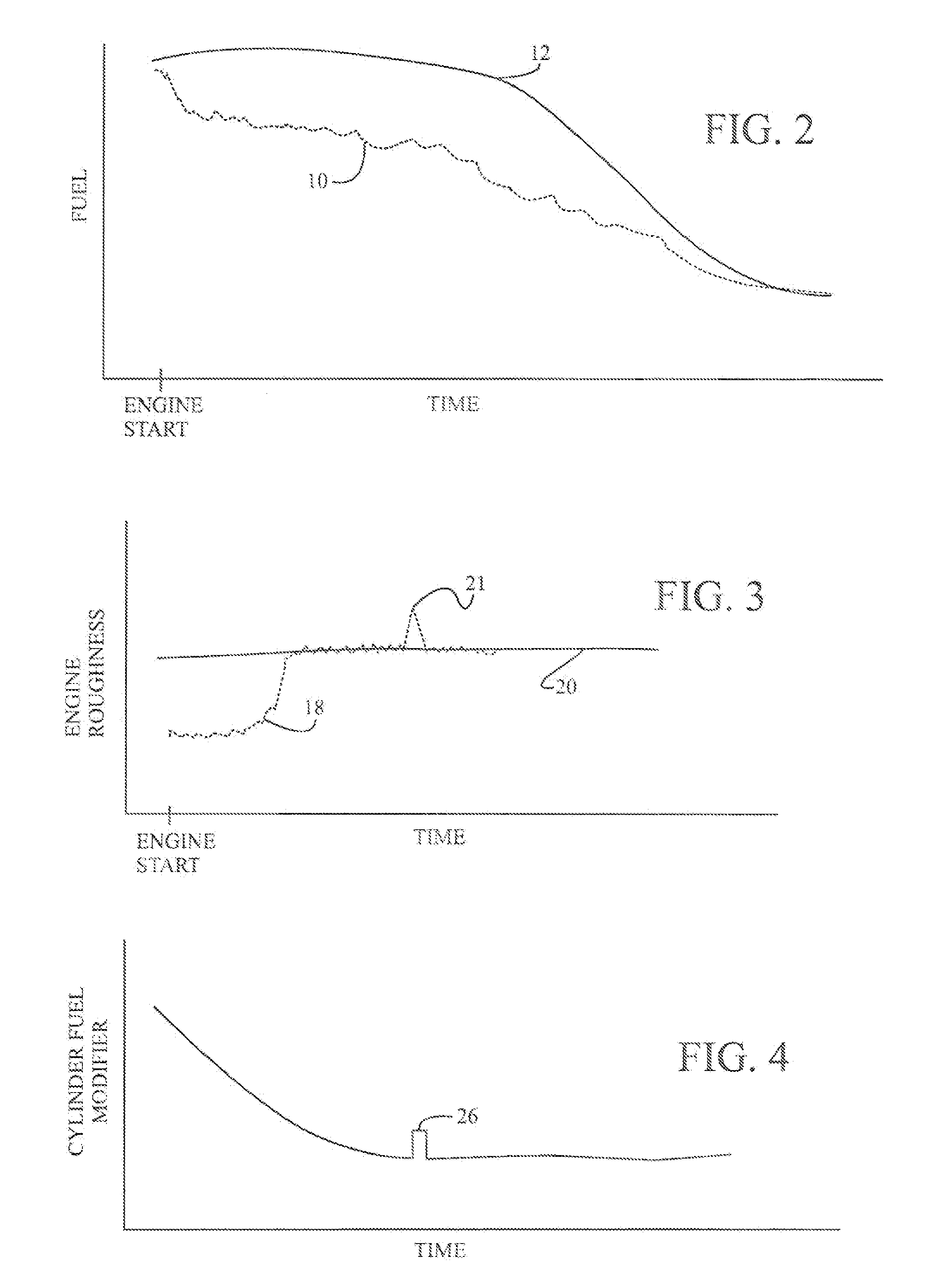Engine event-based correction of engine speed fluctuations
a technology of engine speed and event, which is applied in the direction of machines/engines, electrical control, instruments, etc., can solve the problems of undesirable oxygen sensors and other devices may not have acquired enough information to provide adequate feedback control, and may not be able to provide accurate information, so as to reduce hydrocarbon emissions from vehicles and engine roughness during initial operation
- Summary
- Abstract
- Description
- Claims
- Application Information
AI Technical Summary
Benefits of technology
Problems solved by technology
Method used
Image
Examples
Embodiment Construction
[0015]Referring in more detail to the drawings, FIG. 1 generally illustrates a process by which an engine fuel injection event and / or engine ignition timing event can be modified as a function of current engine operation. In one presently preferred implementation, the process is employed during initial cold start of an engine, although the process may be employed otherwise during operation of the engine, including after a hot start, or otherwise as desired. Vehicles can emit a substantial amount of hydrocarbons to the atmosphere during initial engine operation. Accordingly, in at least some engines and in some engine applications, it may be desirable to provide a relatively lean fuel and air mixture into the engine cylinders for combustion. The relatively lean fuel and air mixture may contain less fuel than a stoichiometric value for combustion as shown in FIG. 2 where line 10 represents a desired lean mixture and line 12 represents a stoichiometric mixture. However, if the fuel and...
PUM
 Login to View More
Login to View More Abstract
Description
Claims
Application Information
 Login to View More
Login to View More - R&D
- Intellectual Property
- Life Sciences
- Materials
- Tech Scout
- Unparalleled Data Quality
- Higher Quality Content
- 60% Fewer Hallucinations
Browse by: Latest US Patents, China's latest patents, Technical Efficacy Thesaurus, Application Domain, Technology Topic, Popular Technical Reports.
© 2025 PatSnap. All rights reserved.Legal|Privacy policy|Modern Slavery Act Transparency Statement|Sitemap|About US| Contact US: help@patsnap.com



